Review of popular types and varieties of thuja

There are a huge number of plant species. But among them, only comparatively few deserve special attention from people. We are also talking about thuja, the varieties of which can vary in size, color, shape.
Description
A plant such as thuja belongs to the cypress family (which in turn turns out to be part of pine plants). In everyday life, it is called the tree of life, or, in other words, the “tree of life”. This description applies equally to both Eastern and Western cultures. The difference between them, however, is, and, moreover, not small - their region of origin is different. Equally important, this determines the color of the foliage and its density.
Western thujas naturally grow in the eastern segment of the North American continent. In height, they can reach 20 m, the diameter of the crown is sometimes 0.7 m. The trees look magnificent, usually crowned with pyramidal crowns. Relocated western thuja plants can be found in various regions of our country.
They are grown not only on the Black Sea coast, but also at the latitude of Arkhangelsk.
It is possible to achieve the growth of western thuja even in a number of localities in Siberia and the Far East. Their feature is the opposite placement of needles, which are divided into scales. Flat shoots are clearly flattened. The bark peels off intensively. 100% of plants belong to the monoecious group; cones are relatively small - their largest size does not exceed 0.01 m.
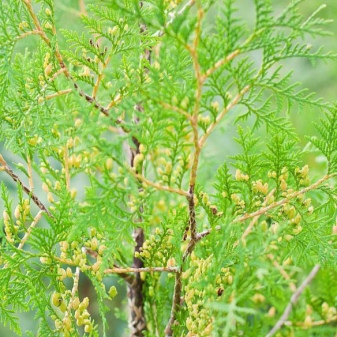
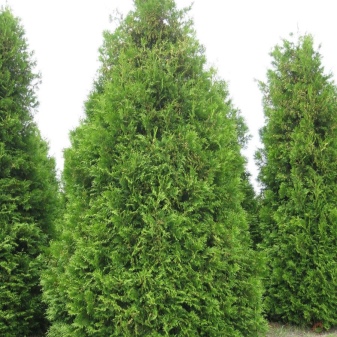
Usually the buds look like an elongated oval. They ripen in the year of flowering. The opened fruits quickly fall off. At the beginning of summer, the cones are colored green, and by the middle of autumn, when maturity comes, they turn brown. Ripe seeds are flattened, have narrow "wings".
Western thuja is very close in appearance to cypress. Its difference from other trees is the density of the dense branching crown of the pyramidal type. Branching of shoots occurs strictly in one plane. Thuja is very resistant to frost, however, waterlogging of the roots in the summer months is extremely dangerous for the plant. Humidity can be either moderate or low. The development of a tree on dry slopes occurs without any problems.
Thuja prefer loams saturated with useful substances. On such soils, they grow to a very lush state. It is characterized by increased resistance to drought. The risk of damage from pests or infections is practically nil.
Western thuja easily survive haircuts and transplants, which are carried out in the spring or in the first 2 months of autumn.
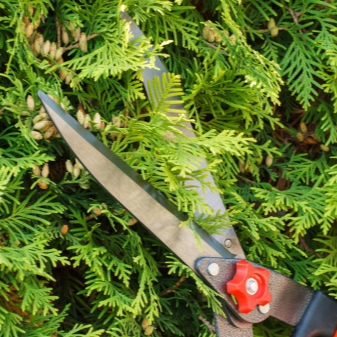
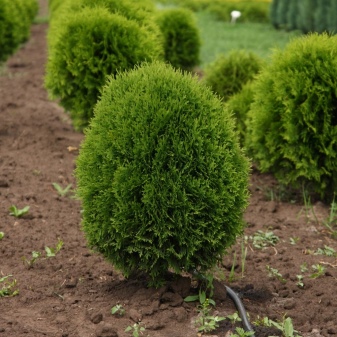
These plants are divided into a large number of ornamental varieties. The difference between these subtypes is expressed in:
- barrel length;
- crown geometry;
- foliage colors.
Western thujas are also distinguished by a very strong aroma. He creates, judging by the reviews, the impression of freshness. It's all about the significant amount of phytoncides and other physiologically significant substances in the tree. A characteristic feature of any thuja is the presence of essential oils. Because of them, the plant is highly prized in the perfumery industry.
On the basis of odorous components, a number of drugs are also created that are used in the treatment of immune disorders and malfunctions of the central nervous system. Certain medications help to stabilize disturbed cardiac activity. But even as a whole, without dividing it into components, thuja helps a lot to health - thanks to it, the air seems to be conditioned.An important feature of this plant is that it is biologically unpretentious in terms of content.
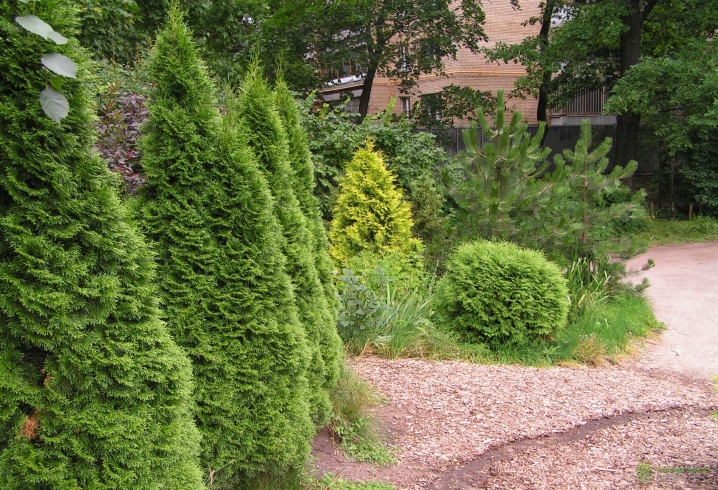
The eastern thuja is also of great importance. It is used for landscaping purposes as often as the western type. The height of this plant can reach 8 m. It appeared in China, it can have both a tree-like and a shrub form. The egg-like crown splits into a mass of flattened plates. They run sequentially from the bottom of the trunk to the top.
The flat scales of the eastern thuja needles are supplemented with resinous glands. This property is precisely what distinguishes this type from the western variety. The aromatic resins make the plant extremely beneficial to humans. The eastern thuja will bloom in May, the plant, like the western one, is monoecious. Among the eastern and western thujas, there are many subspecies and varieties.
Western thuja easily survive haircuts and transplants, which are carried out in the spring or in the first 2 months of autumn.
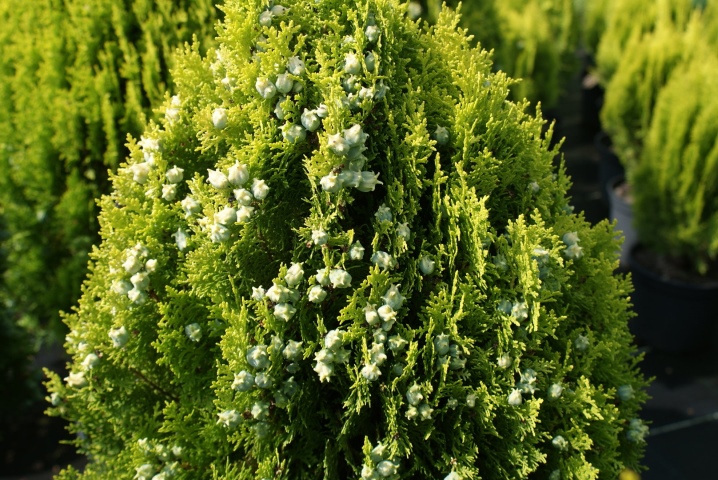
Species overview
Among the varieties of thuja, the heather-like variety deserves attention. It also has an alternative name - ericoides. A feature of the plant is the non-standard arrangement of the needles. Instead of the usual flat scales, tightly adhering to each other, there are needles that reach 0.8 cm in length. They seem to be set aside on the sides and grow on thin, insignificant in size shoots.
Green needles of heather-like thujas acquire a brownish-pink color in the autumn months. In the spring they are systematically greening again. This plant looks like a dwarf shrub spreading to the side, or a tree in the form of a wide pyramid. The tree type has a particularly thickened fluffy top. Quite a few trees have not 1 but 2 vertices.
The youthful form of ericoides can be preserved for life with skillful use. Special measures make it possible to exclude the maturation of culture and the loss of its characteristic external features, which are so popular with people. For propagation, the grafting method is usually used. The height of the tree can reach 3 m. The heather plant is cold enough to grow in the middle lane.
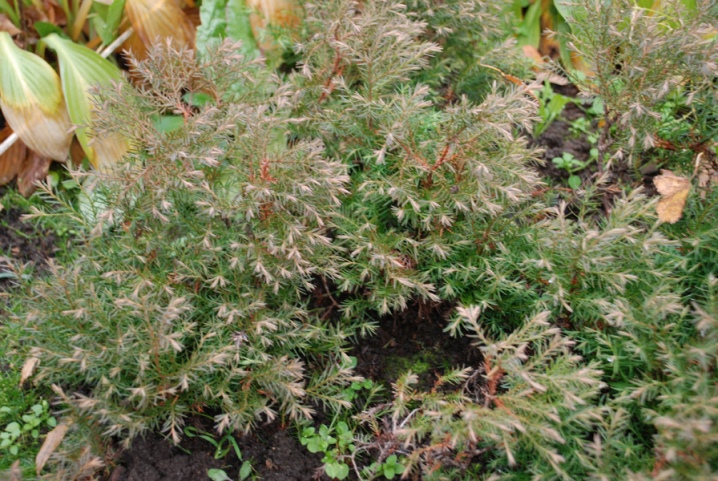
Heather thuja is used:
- as hedges;
- when drawing up sheared and topiary figures;
- in the formation of columns;
- as bonsai.
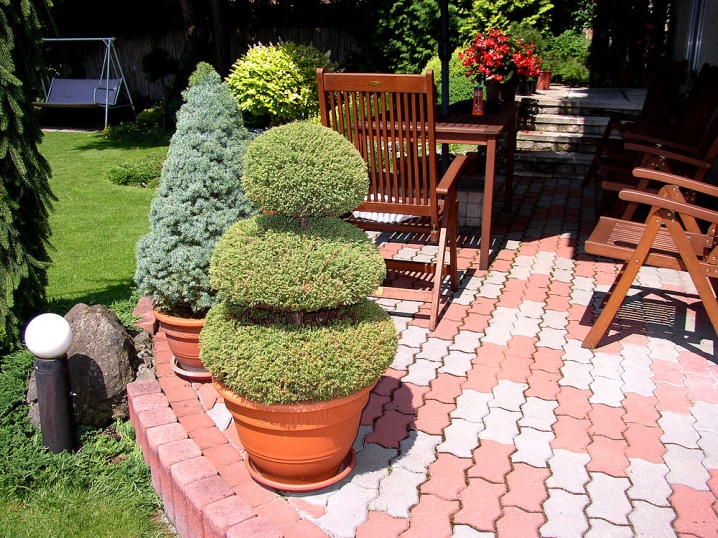
Inexperienced people often confuse thuja with creeping junipers. Such mistakes are due to the strongest external similarity. There are also creepers. The difference between individual species and varieties is mainly due to:
- the size of the trunk;
- crown geometry;
- the colors of the needles.
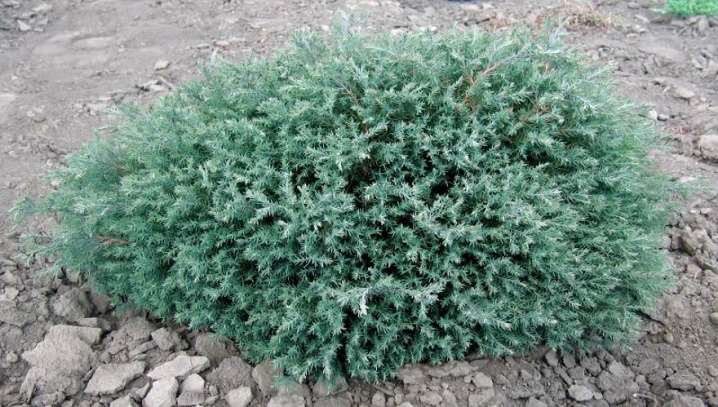
Popular varieties
Among the western thuja, low plants are attractive. varieties "Danica"... They got their name in honor of the country where they were first bred in 1948. Adult specimens sometimes grow up to 0.5 m. Their development is very slow. The finally formed crown looks like a perfect circle.
The appearance of the plant turns out to be more chic thanks to the wavy surface. It is formed by small twigs like a fan. Each of these branches is placed vertically. Danica is compact and gives excellent results in mixborders and rockeries. But there are other excellent varieties as well.

Attractive results can be obtained thuja "Fastigiata"... This is one of the best varieties bred by German breeders. The height of a slender tree exceeds 15 m. "Fastigiata" grows rapidly, rises by 0.2-0.3 m per year. The crown-like crown is formed from strong skeletal branches growing straight up.
The lateral branches of "Fastigiata" are flat, placed horizontally. Their ends are curled up. More branches are covered with dark green needles.
The plant is easily bred with seeds.
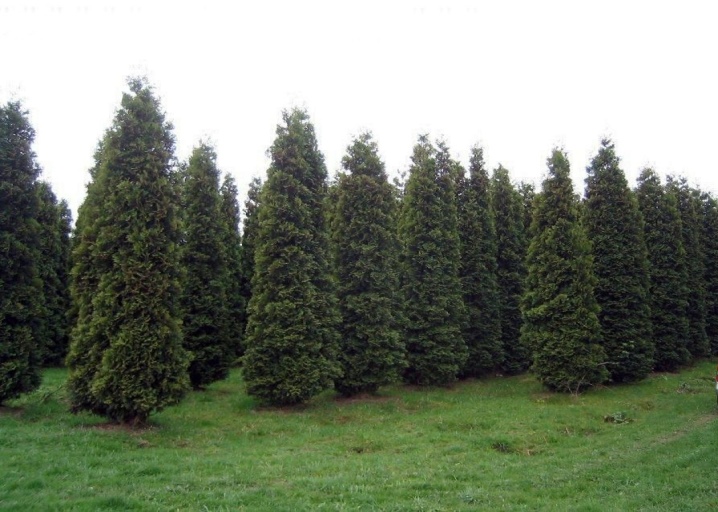
An equally attractive choice can be thuja "Aurea Nana"... It is a dwarf plant suitable for temperate and warm climates. With the onset of a harsh winter, she will definitely need shelter.But this whimsy pays off with an abundance of juicy light green, like fresh grass, the color of the needles. The crown initially resembles a cone, and over time acquires an ovoid configuration.
The tree develops slowly. Ten-year-old specimens grow only up to 0.8 or 1 m. The greatest possible growth is 1.5 m. Adults "Aurea Nana" are painted in darker tones. In order for the characteristic saturation of the colors to appear, the culture will have to be planted strictly in sunny places that are thoroughly moistened.

If you need to choose another impressive-looking variety, then you should give preference Golden Tuffet... Initially, these plants have a round shape, over time the crown becomes wider, acquires the shape of a "pillow" with a height of 0.6 m. The branches look graceful and droop. They are characterized by a multidirectional arrangement.
The needles of a young growth are painted in pinkish-golden colors. In bright sunlight, it gets a bronze or orange tint. Do not plant Golden Tuffet in shaded areas. There, the plant will lose its characteristic warm colors.
Crohn's turn out to be unreasonably rare.
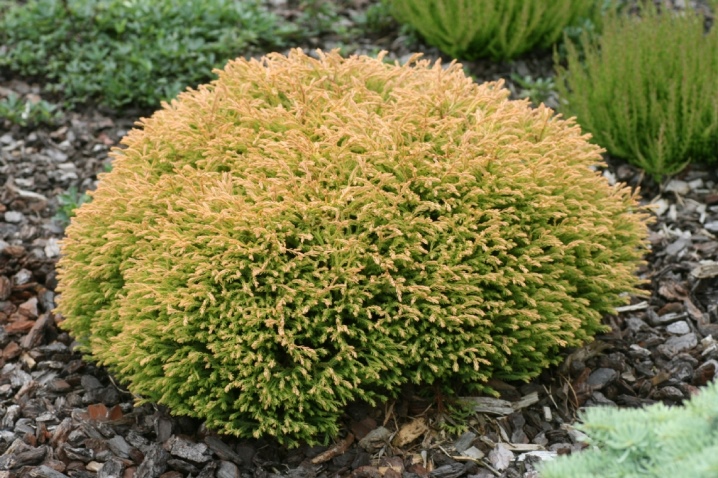
A good alternative can be considered "Filiformis"... This threadlike variety of thuja looks so unusual that it is sometimes mistaken for some other tree. The shoots are very long and resemble a cord in shape. There is practically no branching of branches. The scales of the needles tightly adjacent to the branches turn brown in winter.
Tue "Filiformis" are characterized by:
- unpretentiousness;
- resistance to winter;
- suitability for solitary planting in gardens;
- excellent compatibility with vertical coniferous crops.
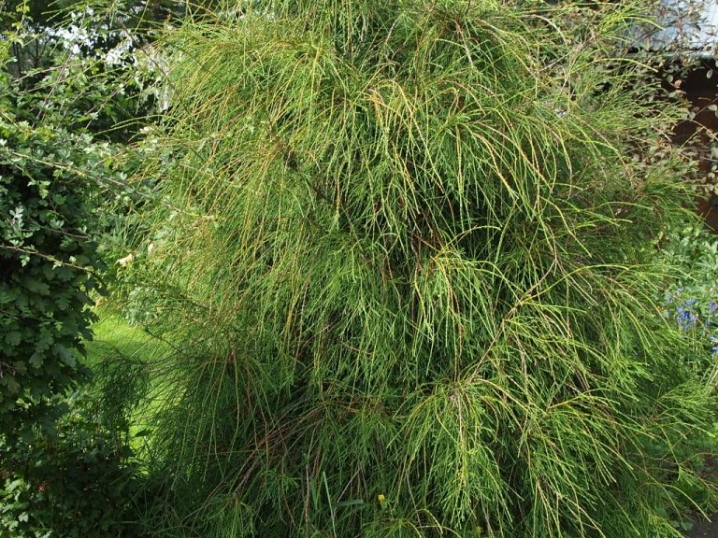
Among the shade-tolerant varieties, it stands out "Europe Gold"... Such plants develop slowly and grow up to 4 m. The dense top forms at first as a narrow pyramid. Adult plants are crowned with a conical crown. When the needles just bloom, they have an orange color; in winter, a yellow-golden color appears instead.
Europa Gold is widely used in:
- solitary landing;
- group plantings;
- green fences;
- the formation of alleys.

Another miniature variety - "VIPcord"... It forms trees with a spherical top with a total height of 1.5 m. The shoots are very large and sloping. Elongated pointed needles fall off, which creates an unusual look. With the onset of cold weather, "Vipcord" turns bronze.
The growth is slow, a maximum of 0.07-0.1 m in 12 months. It is very important for them to obtain stable moisture. When grown correctly, such a plant tolerates frost well.
It can become a real decoration even alone, especially in the form of a trunk.
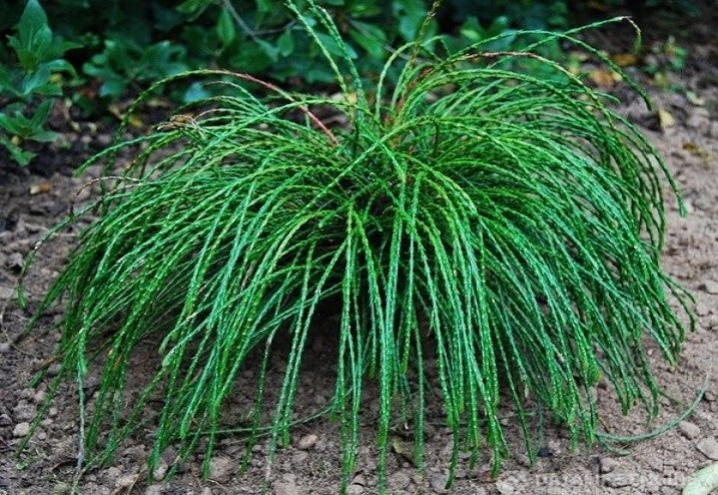
If people are interested in varieties that invariably retain a yellow tonality, then it is worth taking a closer look at the folded tue "Forever Goldie"... Not too large plants again have a cone-shaped crown. The branches turn vertically and run parallel to each other. The growth occurs at 0.1-0.15 m per year, young branches are many times lighter than deep shoots. The main application of "Forever Goldie" is solitary cultivation on stone-covered hills and on medium-sized hedges of a rich color.
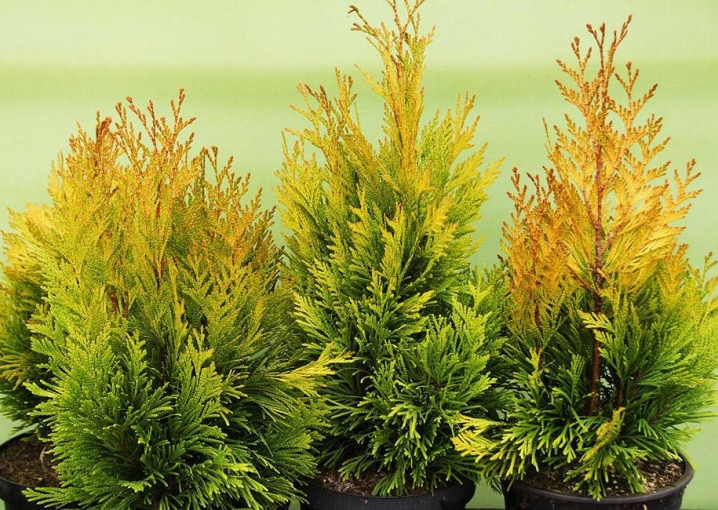
Variety "Amber" colored in a bright yellow tone. With the onset of cold weather, it is replaced by a warm amber color. Thuja of this variety can grow up to 3-5 m. The plant's resistance to winter is sufficient for most Russian regions. This culture is useful for the formation of hedges.
The crown in the form of a regular cone is not too wide. The tree can grow both in the sun and in partial shade. Its damage by sunburn is excluded - the natural forces of culture are sufficient to combat them. The maximum yellow tones are achieved when planting in abundantly lit areas. Thorough drainage of the soil is an important prerequisite for success.
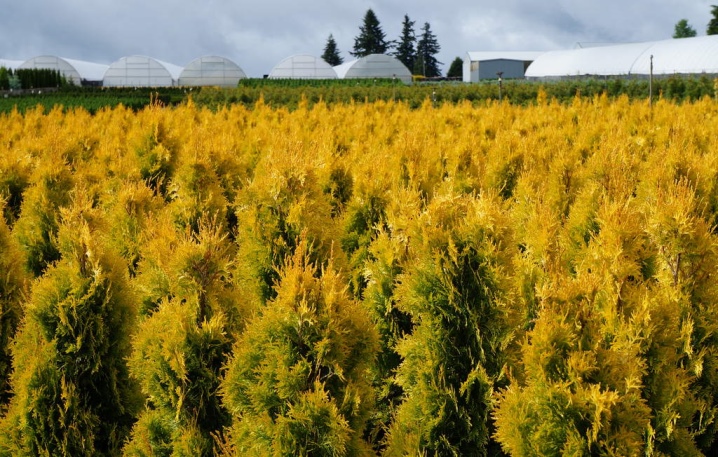
A variety such as "Cancan", is extremely attractive for cultivation in the conditions of central Russia.Such plants fit harmoniously into any landscape. They are able to grow up to no more than 1.5 m. Low trees of this kind are distinguished by an excellent appearance, their crown is painted as gracefully as possible. The outer section of the crown does not exceed 0.7-0.8 m.
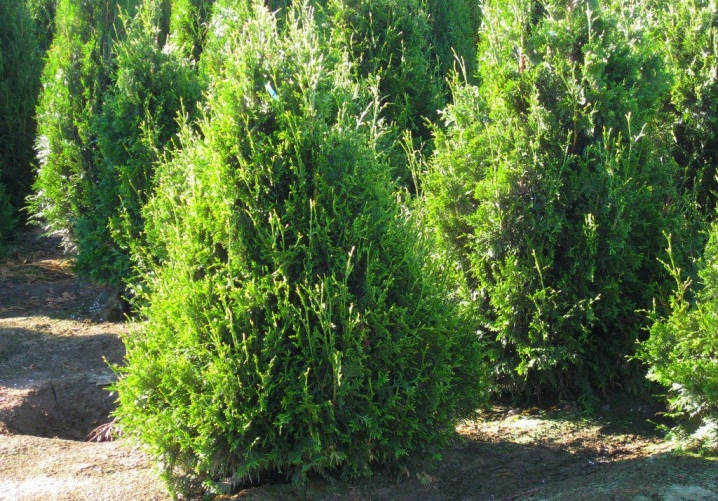
An attractive choice in many cases is also thuja "Gelderland"... Its trees are beautiful and slender, the crown on top of them looks like a perfectly accurate cone. The formation of crown shoots comes from the ground itself. Development is very fast by the standards of this species (0.2-0.25 m per year). The height ranges from 4 to 5 m.
The needles of the Gelderland variety have a powerful green color during the warm months. In the cold season, the needles acquire a bronze or golden tone. Gelderlands are commonly planted as a tapeworm. In this format, they look like Christmas trees and just as well create a superb fairytale atmosphere.
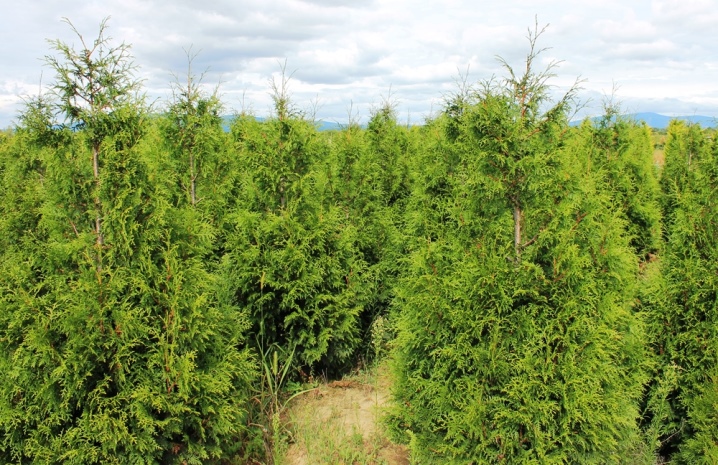
The spherical shape is no less luxurious. thuja "Amber Glow"... The height of the plant is a maximum of 0.9 m. Decently lit areas with a soil hydrogen index of 5 to 6.5 are recommended for planting this crop. Loam is best. The frost resistance of the variety meets the requirements of the USDA 3 standard.
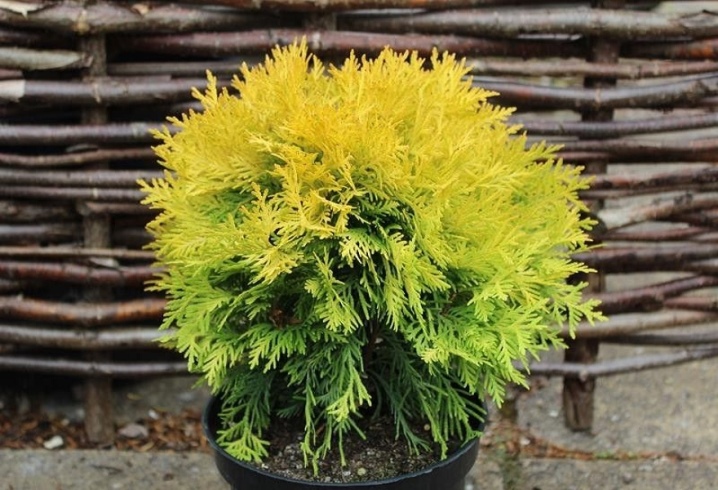
Concerning varieties "Tiny team", then it was bred in the middle of the last century, and during all this time it has not lost its appeal. Plant height - from 0.5 to 1 m. The bark is distinguished by a brown-gray or reddish tint. Bright green needles are clearly divided into scales. The plant will not be shocked by drought or excessive moisture.
Still, slightly damp loam is best suited for it. In dark places, the needles become too sparse, and the crown is too loose. Tiny Tim is used for both hedges and alleys. Instead, you can use a completely different variety - "Zmatlik". He was taken out in the Czech Republic.
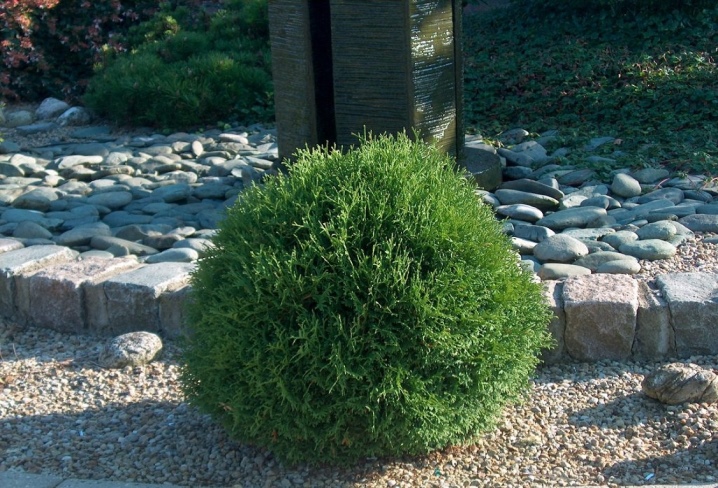
This is a miniature plant that forms a columnar crown. The top of the tree is relatively narrow, the height of the trunk can reach 1-1.2 m. Saplings and recently rooted specimens have an indefinite shape. Because of this, it is often said that the plant is disheveled.
Gradually, when wiggling twigs similar to fans develop, the dense thuja becomes covered with a patterned texture, waves and spirals approaching each other are clearly visible on it.
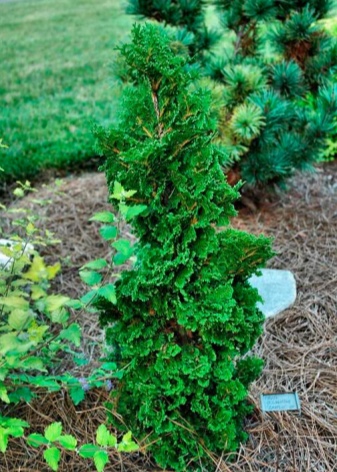
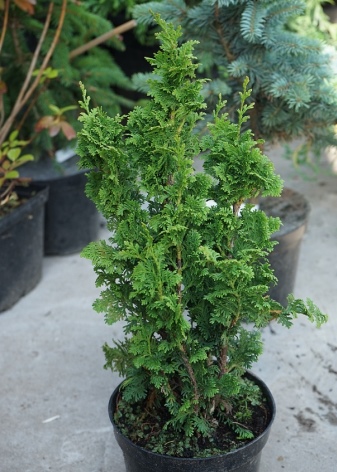
Variety "Yustinka" grows to the same height as "Zmatlik"... They took him out in Poland. Ten-year-old trees are considered adults. Such plants are resistant to cold, able to overwinter in temperate latitudes without problems. Usually "Yustinka" is planted in rockeries or small mixborders.
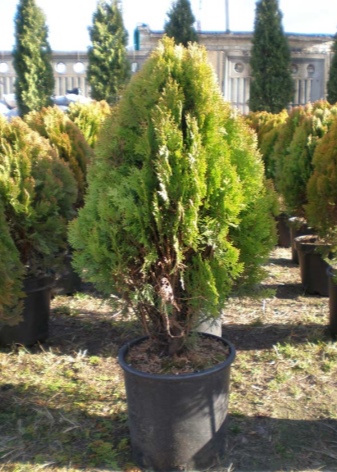
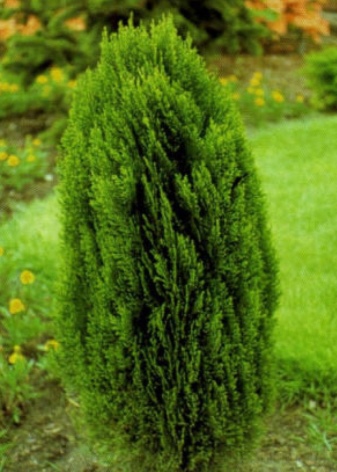
Australian breeders also worked on thuja. The result of their efforts was grade "Morgan"... The dense crown in the shape of a pyramid is composed of fan-shaped yellow-golden twigs. With the onset of cold weather, the color becomes even more attractive, changing to a juicy red bronze, occasionally mixed with orange tints. "Morgan" does not grow too fast, in the 10th year of development it reaches 0.7 m. The annual growth is from 0.05 to 0.07 m.
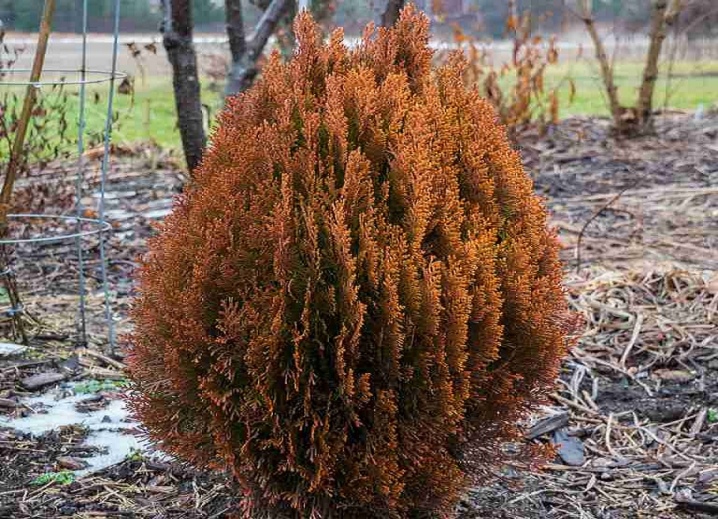
It is appropriate to end the review at grade "Zebrina"... It got its name for its external variegation. Slow growing plants have a wide conical crown. In young plants, it is loose, and becomes denser as it develops. Depending on the properties of the soil and the intensity of illumination, the rate of their development can vary greatly.
Under favorable conditions, it is 0.15-0.2 m per year. If the land is scarce, then the annual rise of the trunk will not exceed 0.1 m. In the 10th year, the trunk will reach 2.5 m (with 1.5 m in girth). Skeletal branches spread out to the sides, and lateral branches droop noticeably. Lush tree "Zebrina" is recommended for specimen cultivation.
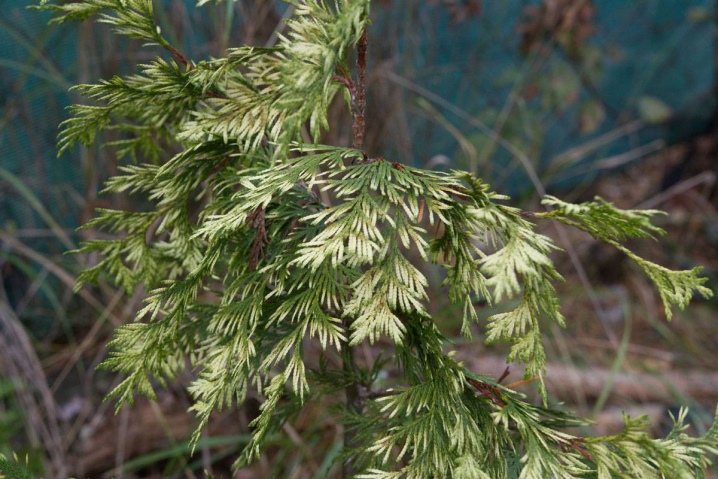
Selection features
When looking for the optimal types and varieties of thuja, you should not limit yourself to a general description of a specific variety.Let it say that it is "suitable for the Moscow region", or "better for a hedge than others" - you need to take into account a number of other nuances. Many varieties thrive only in well-damp areas. But the polluted air is transferred by them frankly badly. As for the level of illumination, it can be very different - it depends on the characteristics of a particular plant.
All types of thuja grow without problems in the Russian climate. But the eastern variety is quite sensitive to extreme cold. It is advisable to choose it if the site is located in a secluded place. Western type is better for open space. If the goal is to buy a fast-growing seedling, then the Smaragd variety can be an excellent choice.
He has only one problem - because of its shape, this plant will not be able to quickly form dense walls. But it is suitable for the same hedges, for individual shrub plantations and as tapeworms.
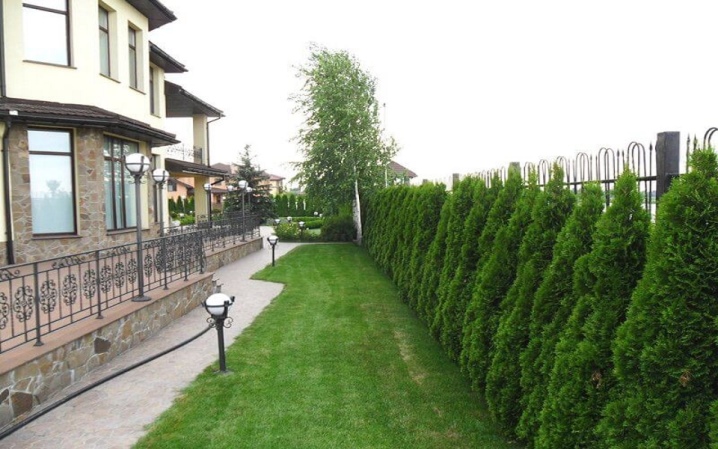
Variety "Maria" recommend choosing for planting in sunny areas with fertile land. It has a decent cold resistance. "Maria" can be used in modest ridges, in container growing on terraces, together with other dwarf conifers (including in rocky gardens).

Tui varieties "Holmstrup" advised to plant in sunny or partially shaded areas with a predominance of moist acidic soils. The main thing is that they are fertile enough. In the rocky garden "Holmstrup" will also grow. But for people who are very busy, such a plant cannot be recommended. In winter, it will have to be constantly cleared of snow, because otherwise there is a great risk of damage to the branches.

Popular grade "Danica" do not choose if there are small children or pets nearby. It's all about the toxic properties of such a plant. Otherwise, it is quite suitable for:
- garden of stones;
- unassuming home garden;
- highlighting borders;
- creating low hedges;
- combination with other crops;
- container growing.

For information on the types and varieties of tui, see the next video.



































































The comment was sent successfully.